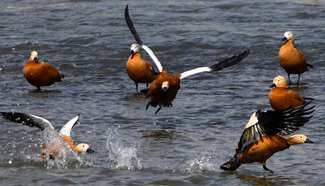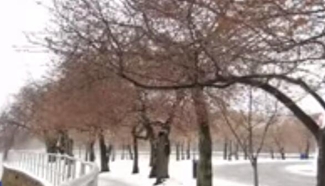SAN FRANCISCO, March 15 (Xinhua) -- A new study of healthy adult mice showed a steady renewal of a type of balance cells in the inner ear and the renewal could be accelerated when spurred by an injury.
The findings, published in the journal eLife, appear to challenge long-held assumptions about the inner-ear structures that regulate mammals' balance, including that cells of the kind could only degenerate over time with age and injury.
Two populations of hair cells, type I and type II, are necessary for the sense of balance in many vertebrates. Hair cells in the cochlea and balance organs of the inner ear are stimulated by sound waves and head movements, respectively. In birds and fish, the vestibular, or balance, hair cells renew naturally, akin to the process of human skin replacing itself. In mammals, though, evidence has been lacking to indicate such turnover of vestibular hair cells.
To discern whether renewal was occurring in the vestibular hair cells of adult mice, researchers working on a project led by the University of Washington (UW) used fluorescent marker to label the supporting cells, which surround hair cells. Over time, while type I hair cells did not adopt the fluorescent marker, the type II hair cells did, indicating that the supporting cells had converted into type II hair cells.
"This gives us a new understanding of the degree of plasticity in the balance organs of mammals," said Jennifer Stone, research professor of otolaryngology-head and neck surgery at the UW School of Medicine and corresponding author of the study.
Type I and II hair cells are intermingled in the inner ear, similar to gray hairs among black hairs on one's head, and have distinct molecular, morphological and physiological properties while communicating through the same neuron. "We think type IIs might play a critical role in the balance system such that they are not disposable," Stone was quoted as saying in a news release from UW. "Type II hair cells might have a purpose that we haven't tested for yet."
The study's implications, according to Stone, involve balance and maybe hearing, too. "This discovery in the vestibular system gives us the opportunity to understand the mechanisms by which vestibular hair cells are generated, so we can apply that knowledge to promote hair-cell regeneration in balance organs and also in the cochlea," where similar hair cells process sound waves but are known not to regenerate or renew.
The function of inner-ear hair cells and their properties of renewal are important considerations for the aging populace: humans' balance and hearing both diminish with age, and falls among seniors are a major threat to health and well-being.












